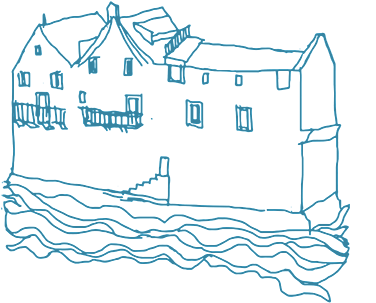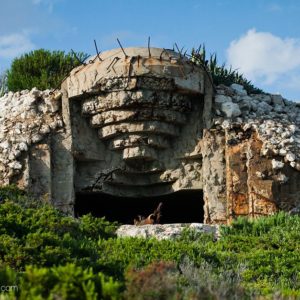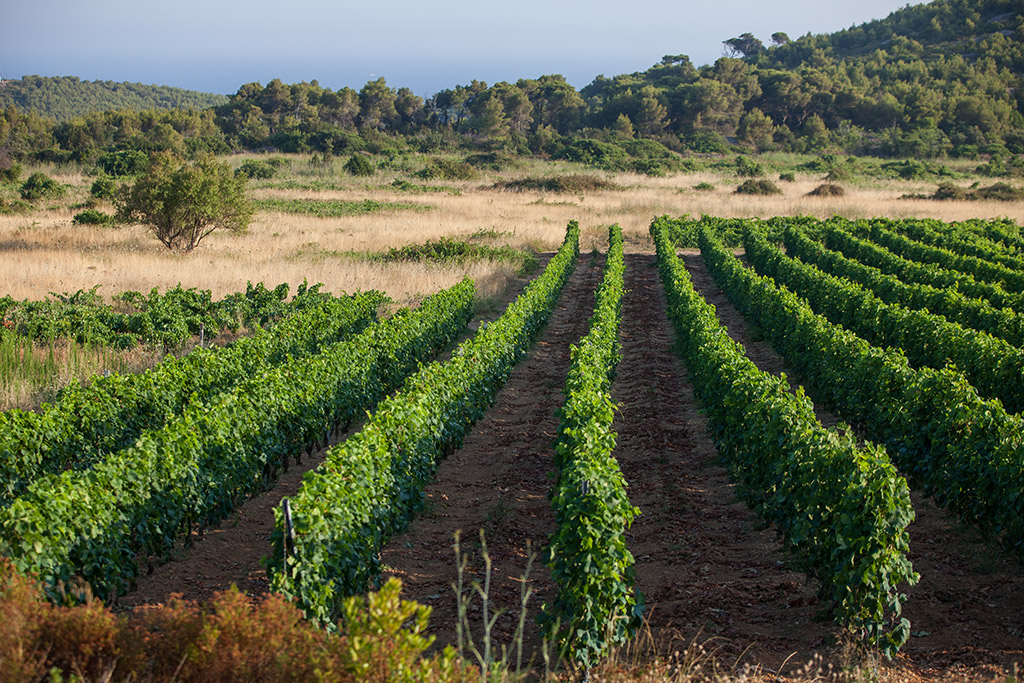The island of Vis will enchantyou completely. An island with irresistible Mediterranean charm, rich in time, because time has stopped here. An island where you live without stress and hustle, where unspoiled nature is preserved. An island you must visit and you will surely return to
One of the farthest and the most remote islands in the Adriatic is the island of Vis. By ferry from Split to Vis, you will arrive after two and a half hours journey. The ferry docks in the port, in the very centre of Vis town, which is the largest town on the island. The town of Vis is facing the mainland, and its harbour still provides refuge for many fishermen, seafarers, explorers and adventurers.
Vis does not have its own marina, but offers to yachtsmen the entire waterfront, and the possibility to become directly a part of the life of a small town – boaters can enjoy a stroll along the seafront, as well as the rich gastronomic offer in beautiful Vis restaurants that compete in superb local cuisine.
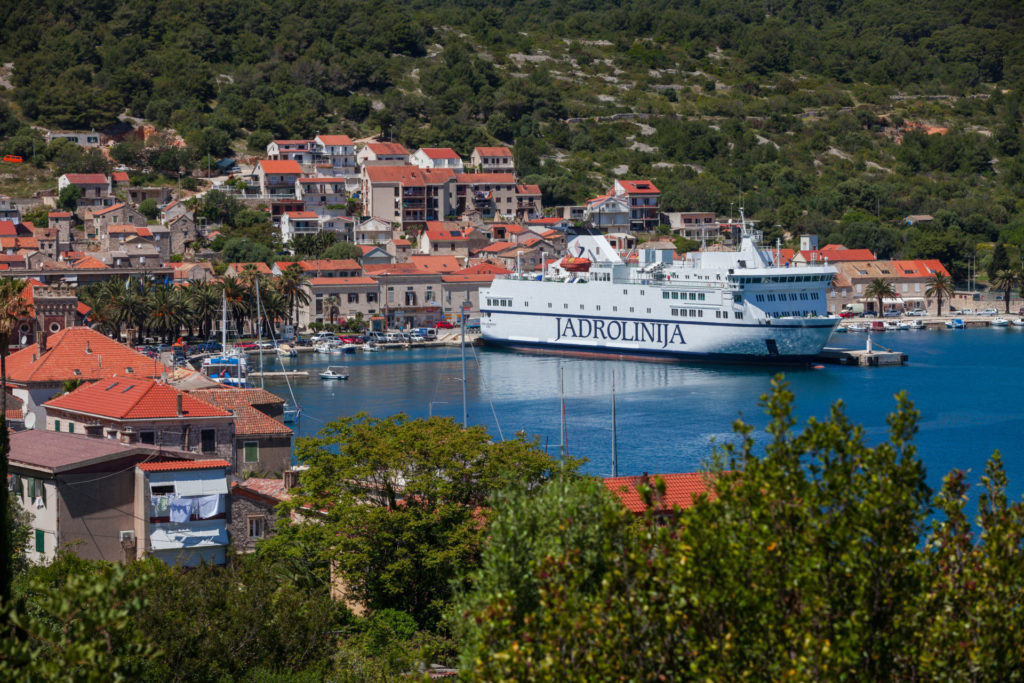
During the summer season, in the evening, when you walk down the old road to Vis, it resembles some dazzling metropolis. The splendour of the city spreads from the waterfront to the outskirts of the town – from the north, on the islet of Host, the lantern flashes, and to the west shines the bay of Stonca, filled with fishing boats and sailboats, while to the east shimmers the old, Renaissance part of the town – Kut.
The town of Vis is extremely clean with well-maintained green spaces. Holidays and swimming on Vis island will give you an exceptional experience just because of the cleanliness of the open sea that surrounds it. Among so many fascinating beaches and bays, the only problem on Vis for you will be to choose the most beautiful one 😊. Do not miss visiting charming secluded coves and resorts, but you can refresh yourself on the main public beach, as well.
The island of Vis is rich in underground tunnels and bunkers, some of which are nowadays turned into real attractions, so we recommend you the Military tour and a Wine tour. Besides, while on the island, do not miss to visit the Blue or the Green Cave, explore numerous walking routes, visit rural households, try water sports, recreation grounds, cricket, diving or cycling.

Summer in the town of Vis has a long tradition made up of a series of cultural events, which during the season revive in a special way the whole insular area, and make it active.
Vis will be an ideal choice if you are looking for a place that will offer you silence and solitude, as well as entertaining and cultural events when you are in the mood for company and “party”.
We wish you a pleasant stay on our island and in the town of Vis!
History of the island and the town of Vis
In the beginning of the 19th century, in the town of Vis lived round 12,000 inhabitatnts, while today there are only about 1,500
The town of Vis, the largest settlement and the port on the island of Vis, is located in the bay of Saint George.The mild climate, fertile land and abundance of fish, provide rich living conditions, from the earliest days recognized by the Greeks, that in the 4th century BC., under the leadership of tyrant Dionysius I of Syracuse, founded in the area of today’s town of Vis, an independent city-state: Polis Issa, considered one of the oldest towns in Croatia and on the eastern Adriatic coast.
Issa coins its own money, and the citizens trade all over the Mediterranean. Vis/Issa was so powerful in Hellenistic times, that even established its own colonies in the area of today’s towns of Trogir, Stobreč and Lumbarda on Korčula. Numerous archaeological remains speak of the development of the city. In the archaeological collection of the Vis Museum, located in the Austrian fortress Batarija, one can see the most beautiful example of ancient art on the island – the bronze head of the goddess Artemis. Issa gained special fame in the ancient world due to the excellence of its wines.

Gaius Julius Caesar, abolished the independence of Issa and since then Issa became part of the Roman empire. The Hellenistic and Roman periods are still visible today in Vis town, in the remains of spas/thermae, theatres and city walls.
In the 7th century, a new chapter opens with the arrival of settlers from the north, the tribes of Slavic origins – the Croats. The new inhabitants quickly acquired marine skills as well as the knowledge of growing Mediterranean crops. Vis is a part of the early medieval Croatian kingdom, and its inhabitants stand out for their maritime skills and even piracy, which is why 997 to 998. the Venetians destroy and plunder the Croatian city of Vis.
However, the town of Vis continues to live in a new settlement called Velo Selo. In the centre of the settlement, back then as well as today, is the shrine of Our Lady of Velo Selo, which is also the shrine of the entire island of Vis. The Aragonese, being in war with Venice, devastated Velo Selo in 1483. The experience of this assault, as well as the increasing threat of attacks by the Turks and Arabs, convinced the inhabitants that the island could only be defended if it had a strong settlement on the coast. The surviving residents descend again to the port of Sveti Juraj/St George, Kut and Luka and rebuild the present Vis.
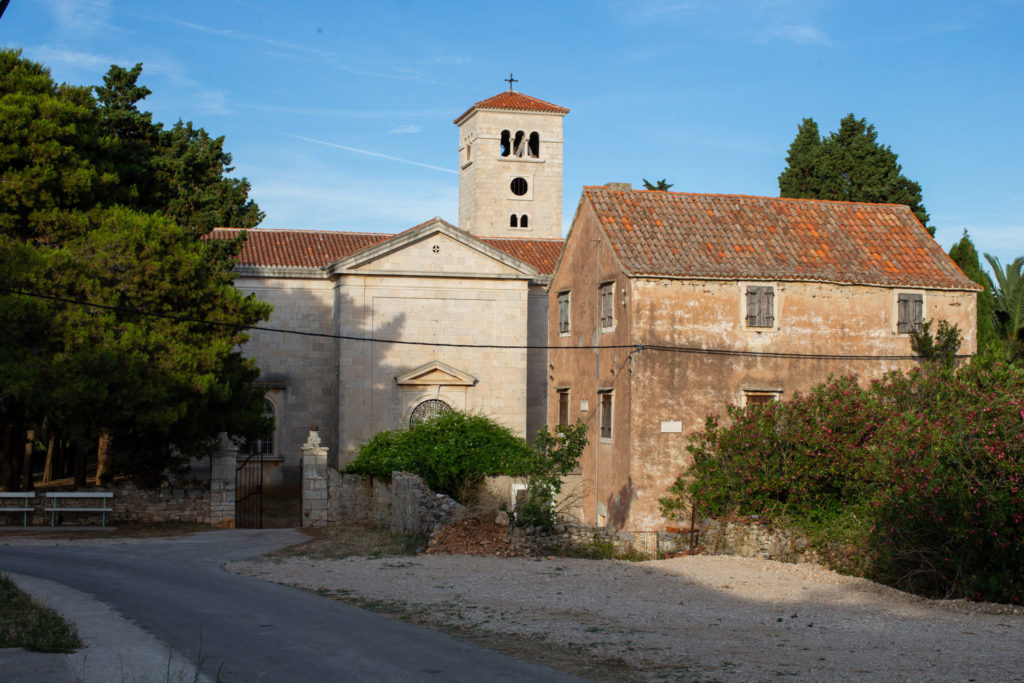
At that time Vis was under the rule of Venice, and in the local sense it was part of the Hvar commune and within the Diocese of Hvar. From the 16th century, the nobility of Hvar and Vis raised their summer residences in the town of Vis, that still exist today.
After the fall of Venice, Vis in 1805 comes briefly under Napoleon’s rule. From 1811 to 1815, the English Navy seized the Vis from the French and made it the center of commerce in the Adriatic. Vis becomes the intersection of maritime routes in the Adriatic and a major exporter of wine, as well as a transit port for salt, and goods from the Balkans and the Middle East. The population reaches 12,000. The British built powerful forts on the island, which can still be seen today.
With the collapse of Napoleon, Vis became an integral part of the Austrian Empire from 1815 to 1918. The new government continued to fortify the island started by the British. This proved justified when the young Italian kingdom, in nationalist ecstasy, tried to occupy the eastern Adriatic coast as well. Invading Vis should have played a key role. In 1866, the Croats under the Austrian flag defend Vis from the newly founded state of Italy. On July 20th ,1866. happens a big Naval Battle of Vis (Viški boj). A large and modern Italian fleet under Admiral Persano attempted to occupy Vis. They were opposed by the few and outdated Austrian warships with the mainly Croatian sailors aboard, under the command of Admiral Tegetthoff. Despite the apparent superiority of the Italians, the Austrian fleet won a great victory. This stopped Italian claims to the eastern Adriatic coast for the next fifty years.
After the battle, a national revival followed, a multiparty system was introduced and economic boom began. While Vis was under the Austrian rule, roads, lighthouses, ports and sewers were built. Laws, a cadastre and a land plot were regulated – therefore, that was the “most orderly, most coherent” era of Vis history.
At the end of the First World War in 1918, Vis was occupied by Italy. The occupation lasted until 1921. From 1921 to 1941 Vis was a part of the Kingdom of Yugoslavia, suffering dictatorship along with the rest of Croatia. Since the beginning of the 20th century, phylloxera disease has been destroying vineyards, so emigration and poverty have been a constant companion of the town until the beginning of the Second World War.
The fall of the Kingdom of Jugoslavia and the beginning of the WWII in 1941 has brought back the Italian occupation force. The occupation lasts until 1943, and ends with the capitulation of Italy.
On the same day of the Italian surrender, communists and partisans, who had previously been operating illegally, established authority in the city. Vis becomes the centre where the foundations of the new Yugoslav state are laid under the Communist rule. From then until the end of WWII, Vis is in the hands of partisans as well as of English and American soldiers, united by the war alliance against fascism. They used Vis in the conduct of many war operations, most of them airborne. In the central part of the island, an allied airport was operating at the time. At the runway of the war airport, in 1960, a vineyard plantation was planted, which is still there today.
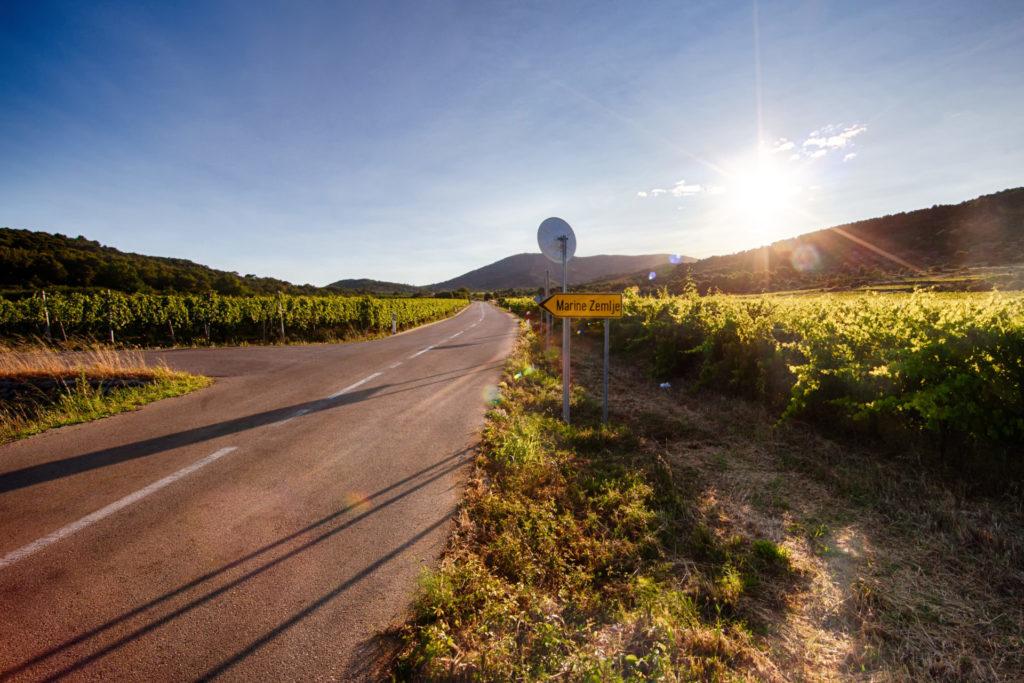
During the socialist period, from 1945 to 1990, the island was a JNA (the Yugoslav People’s Army) military base that is why it was closed to the foreign tourists until 1989. The population fell to half – economic development was reduced to the accumulation of past periods.
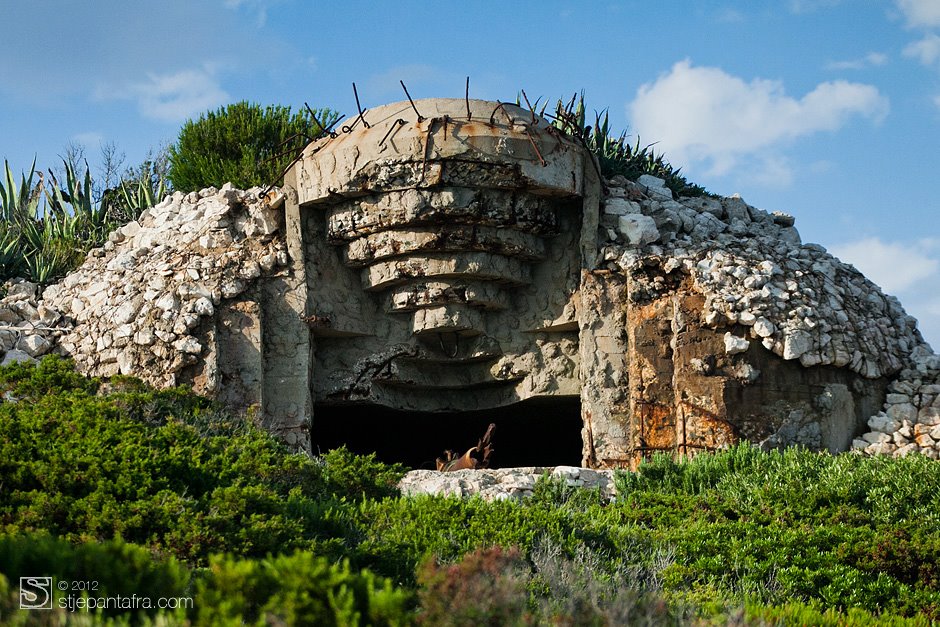
In 1990, the first free elections in Croatia were made possible. A sovereign and independent Republic of Croatia was established. Vis had to go through another occupation from 1990 to 1992; when both, the Croatian police and JNA military police could be seen in the town – the latter left on May 30, 1992, and the very next day arrived the Croatian army.
History was not generous to the town of Vis. Through the decades it led it from prosperity to neglect. The ‘consequences’ are still visible today: it remains preserved, untouched in its architectural authenticity, surrounded by unspoiled nature. What once were consequences, have now become advantages. With fishing and agriculture, in the last 15 years, tourism has developed as a leading branch of the economy, gaining its momentum.
The town of Vis is gravitated by the villages of the eastern part of the island: Ženka, Milna, Bargujac, Podstražje, Podselje, Plisko Polje and Marine Zemje.
We highly recommend you to visit the Archaeological Museum in the town of Vis, located in the fortress Batarija. Here, you can see the prehistoric artefacts from the Bronze and Iron Age, collected throughout the island. One of the most interesting exhibits is a copy of the bronze head of the goddess Artemis. The statue dates from the end of the 4th century BC, and represents one of the most significant Greek bronze monuments in Croatia.
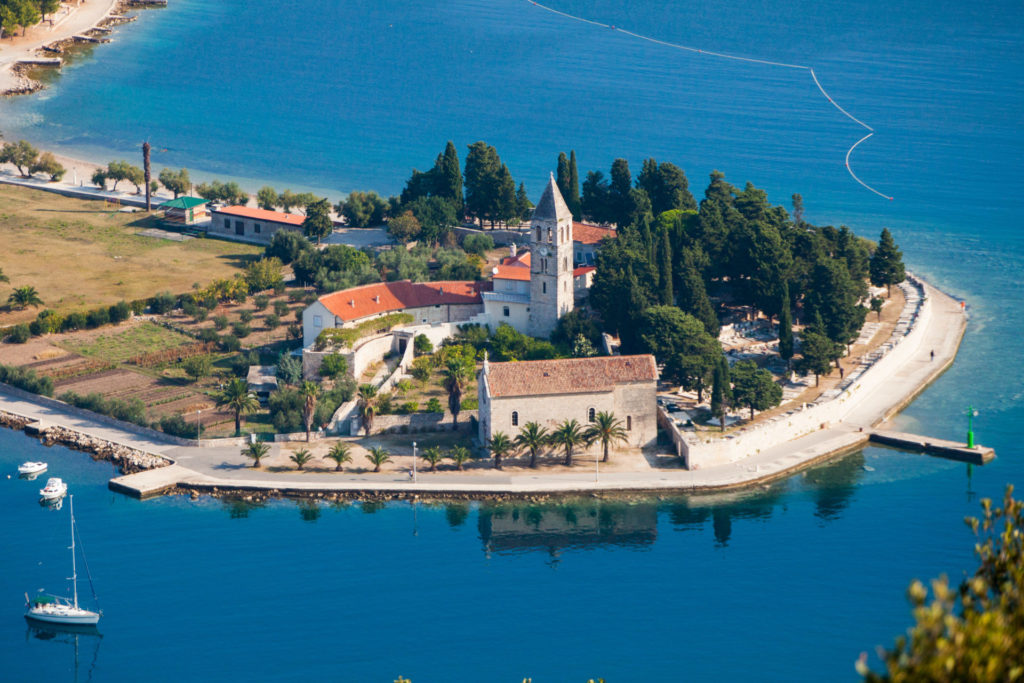
Of the sacred architecture and art, stands out the pre-Romanesque Church of St. George (St. George/sv.Juraj is a patron saint of the city), in the cove of the same name, near the Czech villa, as well as the Church of St. Mary, in the village of Podselje – the spiritual centre of the island, where the inhabitants of Vis go on a pilgrimage to the Feast of the Assumption of Mary/Vela Gospa, on August 15.
As for the other sacral objects, you should visit the Church of St. Cyprian and Justina, in Kut, the Church of Our Lady of Spilica, which connects Kut and Luka/the Port (two main parts of the town of Vis), and the Franciscan monastery on the Prirovo peninsula.
